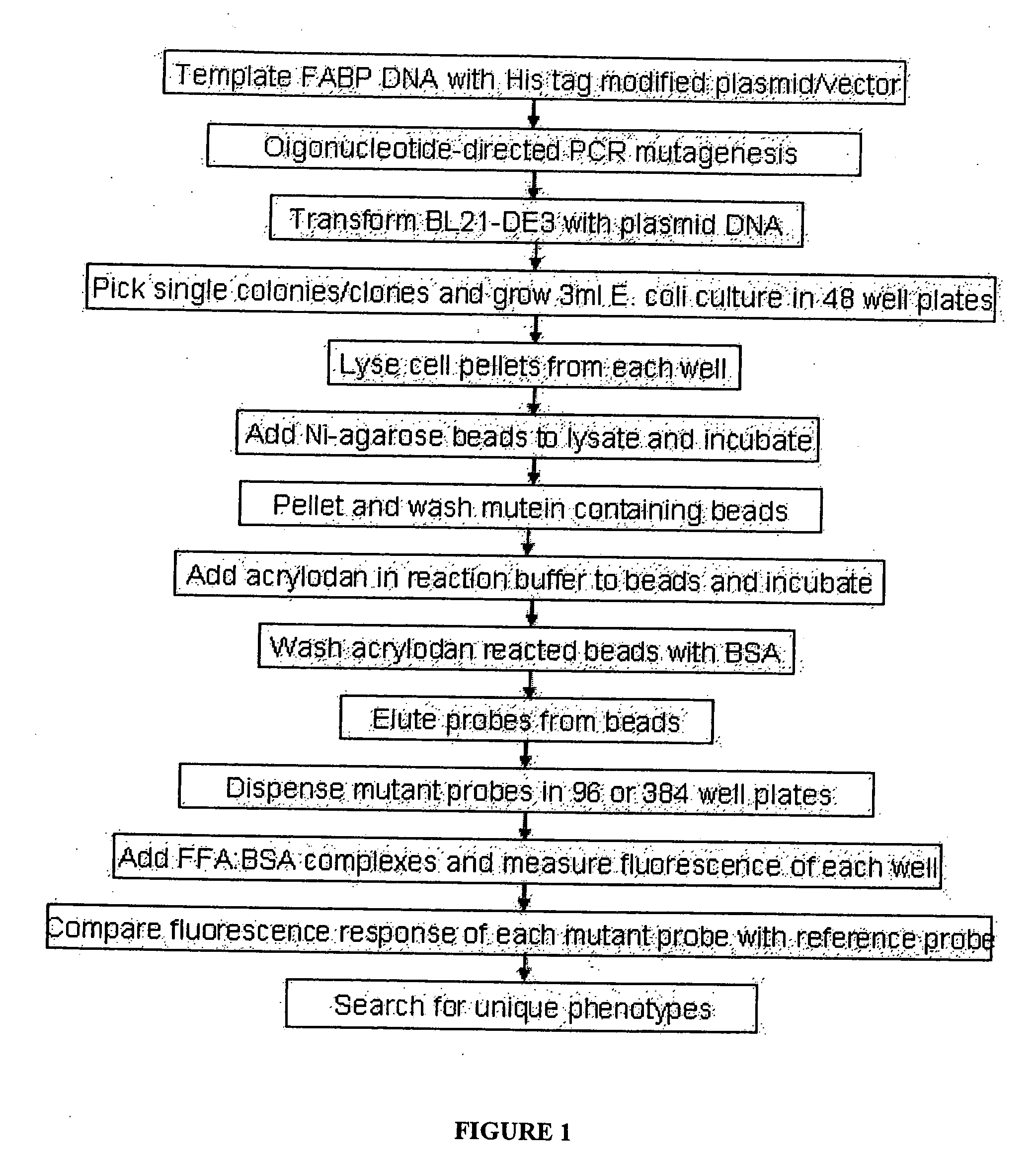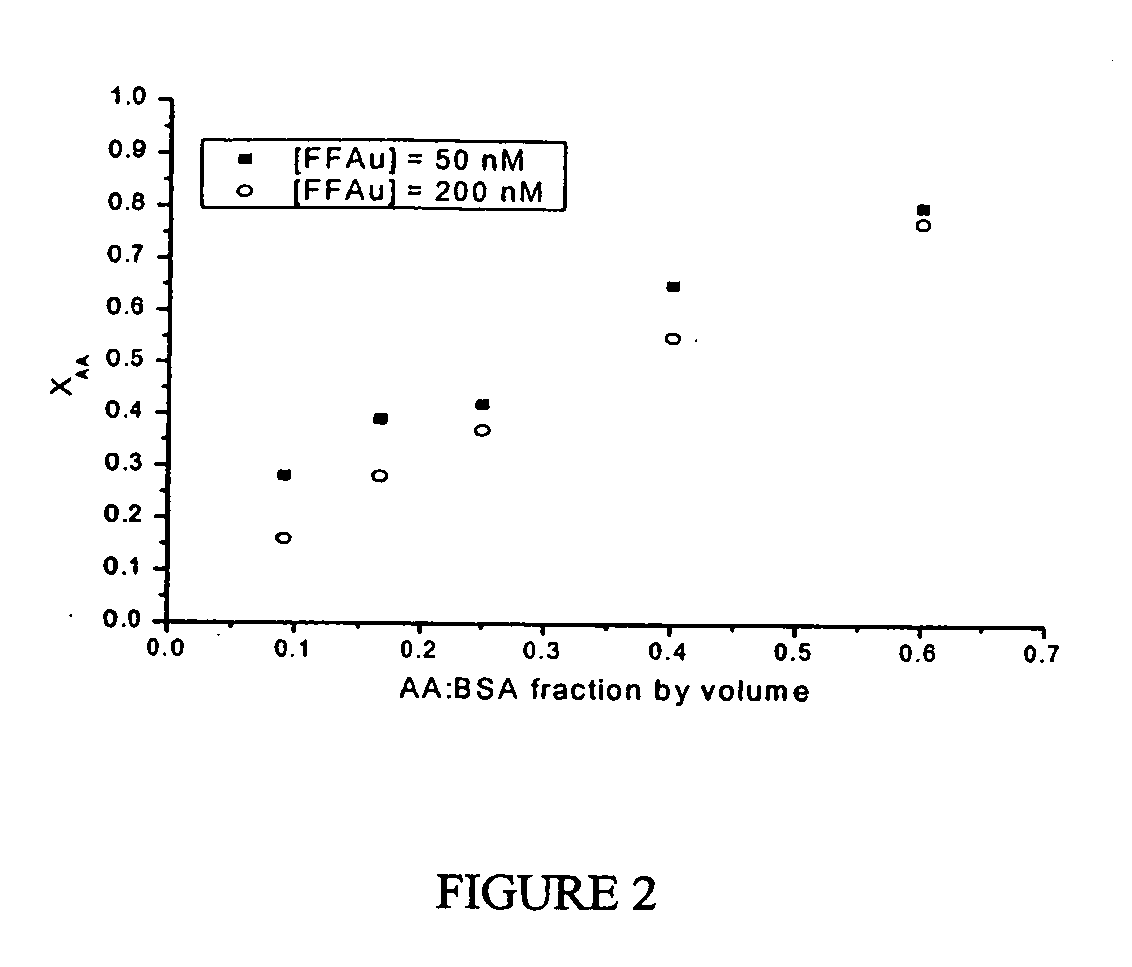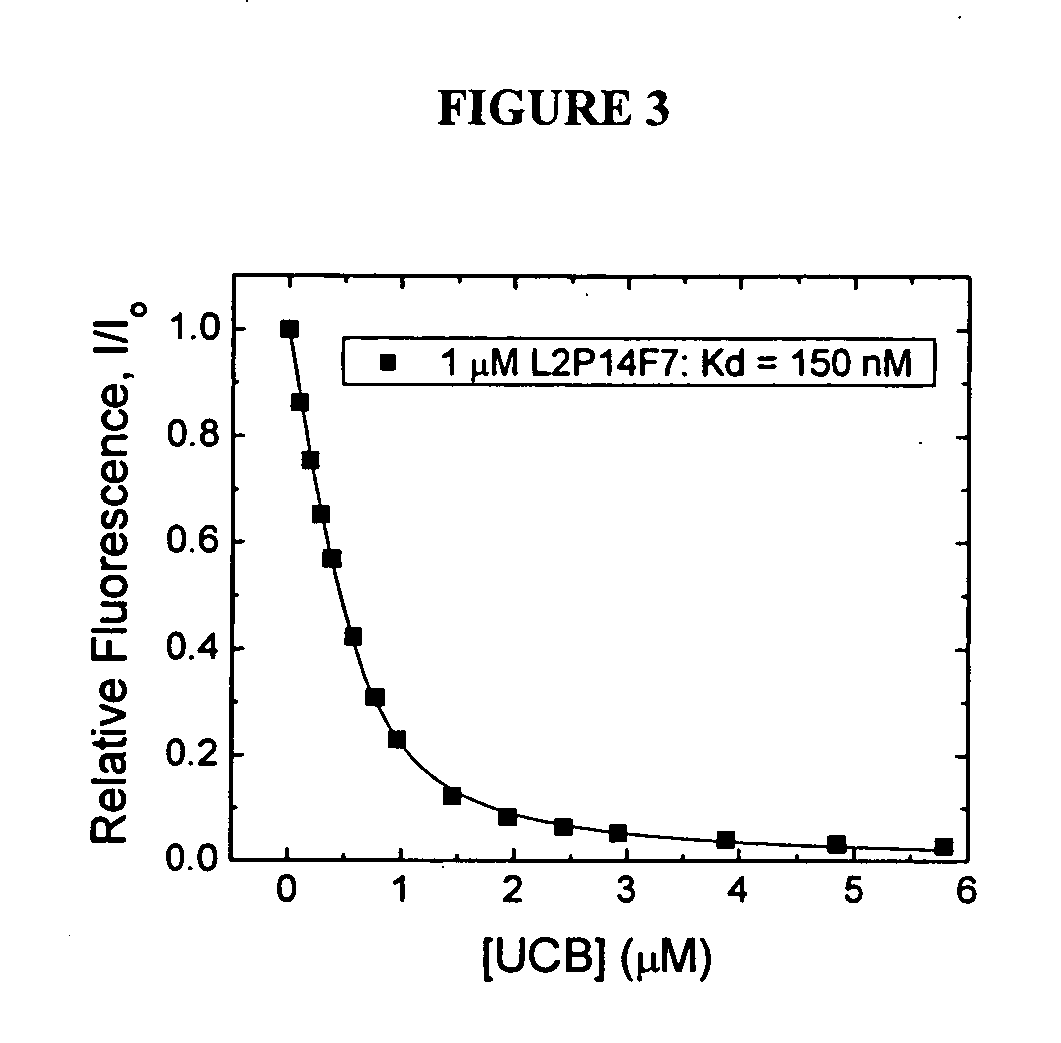Development and use of fluorescent probes of unbound analytes
a technology of unbound analytes and fluorescent probes, which is applied in the field of high throughput screening methods, can solve the problems of poor solubility properties in aqueous solutions, no general methods for determining the unbound concentrations of other important metabolites, and no way to determine the concentrations of different ffau in the mixture of ffau
- Summary
- Abstract
- Description
- Claims
- Application Information
AI Technical Summary
Benefits of technology
Problems solved by technology
Method used
Image
Examples
example 1
[0105] Specific point mutations were made at thirty-five sites within the rI-FABP-L72A fatty acid binding pocket, with up to 19 different amino acid residues substituted for the native amino acid at each site. Each mutein contained one substitution. Sites that appeared to produce interesting modifications were used as the starting point for further mutagenesis studies (See Example 2). Mutagenesis was carried out as follows.
[0106] The rI-FABP-L72A open reading frame (ORF) was cloned into a modified pET-11d plasmid / vector (Novagen) at a site that resulted in the fusion of a 6-His affinity tag to the protein COOH-terminus. This template DNA was propagated in E. coli strain XL10-Gold (Stratagene). Purification of the template followed standard protocols (Sambrook et al., 1989). The template genes used in other screening examples also encode COOH-terminal 6-His fusions. We have found that the affinity tag can be fused to the NH2-terminus, the COOH-terminus or both termini of the rI-FABP...
example 2
[0181] Four amino acid positions Y14, L38, L72, and Y117 of the L72A mutant of rI-FABP shown as SEQ ID NO: 4 were chosen for simultaneous, random mutagenesis. At each position, the native amino acid was potentially replaced with one of 8 other non-native amino acids. This meant that there were nine possible outcomes at each position: G, A, V, I, L, M, F, Y or W. The mutagenesis reaction for this library was carried out essentially as described in EXAMPLE 1. In this case, oligos for changing each of the four positions to the 8 different non-native amino acids (i.e. 32 oligos of equimolar amounts) were added to the mutagenesis reaction simultaneously. E. coli strain XL-10 Gold was transformed using the mutagenesis reaction and all of the resulting colonies pooled for the isolation of plasmid (Sambrook et al., 1989). The isolated plasmid mixture represented the DNA form of the library. An aliquot of library DNA was used to transform the E. coli expression strain BL21-(DE3). Mutant prot...
example 3
[0185] Two probes, ADIFAB2 (AD2) and L72V R106Q R126Q (VQQ), were used to determined the concentrations of arachidonic (AA) and palmitic (PA) acids in a prepared mixture of these fatty acids complexed with BSA. Probe VQQ has the unique property that it does not respond to palmitic acid. Four complexes were made as outlined in Example 1: (1) AA:BSA with 50 nM free AA, (2) AA:BSA with 200 nM free AA, (3) PA:BSA with 50 nM free PA, and (4) PA:BSA with 200 nM free PA. These complexes were mixed in ratios ranging from 1:1.5 to 10:1 PA:AA by volume and measured using ADIFAB2 and VQQ. Measurements were done using an SLM 8100 spectrofluorometer (SLM-Aminco) in polystyrene cuvettes. Approximately 15 μL aliquots of each complex mixture was added to 1.5 mL of HEPES buffer, and about 0.5 μM of each probe was used. The ratio was measured for each probe and the total unbound FFA concentration and fractional concentrations of arachidonic and palmitic acids were determined using the following equat...
PUM
| Property | Measurement | Unit |
|---|---|---|
| Molar density | aaaaa | aaaaa |
| Molar density | aaaaa | aaaaa |
| Molar density | aaaaa | aaaaa |
Abstract
Description
Claims
Application Information
 Login to View More
Login to View More - R&D
- Intellectual Property
- Life Sciences
- Materials
- Tech Scout
- Unparalleled Data Quality
- Higher Quality Content
- 60% Fewer Hallucinations
Browse by: Latest US Patents, China's latest patents, Technical Efficacy Thesaurus, Application Domain, Technology Topic, Popular Technical Reports.
© 2025 PatSnap. All rights reserved.Legal|Privacy policy|Modern Slavery Act Transparency Statement|Sitemap|About US| Contact US: help@patsnap.com



